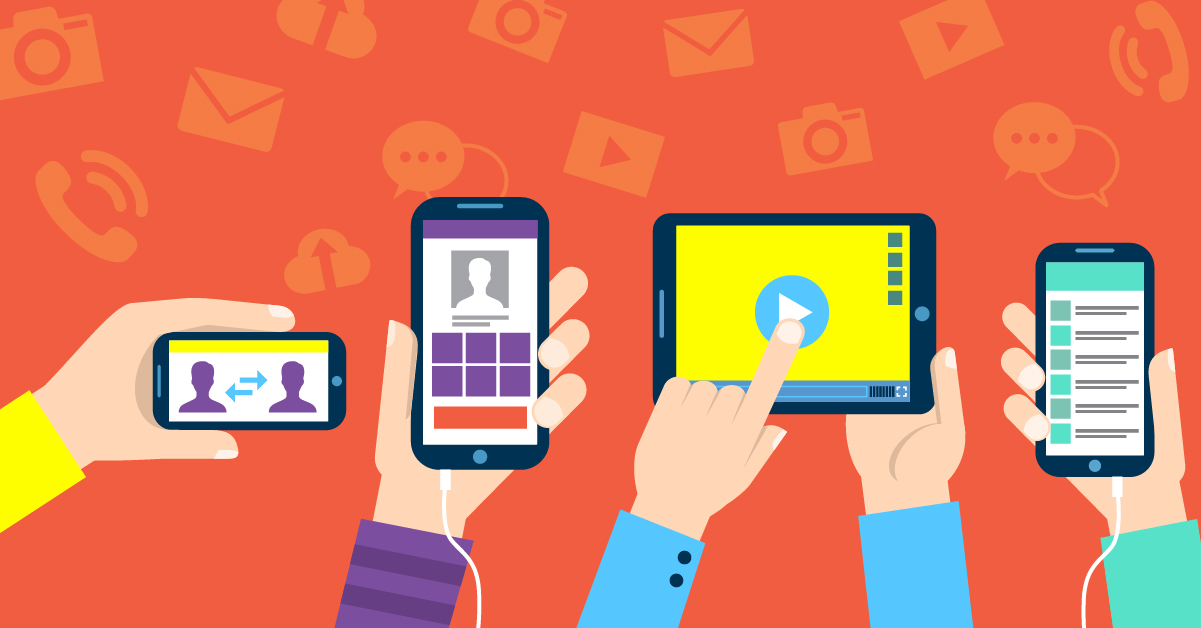
How Kids Are Using
Mainstream Social Apps
What You Should Know
About Your Child’s Social Media Platforms
The Most Popular
Social Apps Among Teens and How They’re Using Them
What Are the
Mainstream Social Apps and How Are Teens Using Them?

According to new research by the Pew Research
Center, 95% of teens say they have access to a smartphone, and 45% indicate
that they’re online “almost constantly.” With increasingly easy access to
social media via smart devices—and an hour’s worth of social media data being
within reach in under two seconds as internet speeds
grow—parents and teachers should stay informed and aware of what social media
platforms are available to teens and how kids use them.
Read on to learn about four of the most popular social apps
among teens and how parents and educators can be proactive in teaching kids to
be responsible and respectful on social media.

Instagram
According to the above Pew survey, Instagram is the second
most popular social platform for teens. It combines photos/videos, likes, and
comments. Accounts can be public or private, and users can send direct private
messages.
Caregivers and educators should be aware that some public
accounts may contain inappropriate images, though the platform’s terms keep
offensive content to a minimum. They should also consider how the “like”
feature on Instagram can become a comparison tool for teens and a way to measure popularity or
self-worth.

Snapchat
Snapchat is a messaging app that lets users post pictures or
videos that vanish after an allotted time. And while most teens use Snapchat to
send funny pictures, the nature of the app makes it easy for users to send or
view inappropriate content.
Snapchat has recently been under scrutiny for inappropriate
ads and 18+ channels. But with a proper
understanding of the platform’s privacy settings (and a
conversation about what shouldn’t be posted on the app), responsible teens can
use this platform safely.

Twitter
Twitter allows users to post 280-character messages known as
“tweets.” Teens mainly use Twitter to express opinions, share short snippets,
and keep up with celebrities and other prominent figures. The platform makes it
easy to engage and be engaged with.
While profiles can be private, most accounts are public.
Tweets appear immediately once posted, so this platform requires a discussion
about posting appropriate content.
Facebook
While Facebook seems more popular among adults, it’s still
one of the more popular social platforms for teens. It’s sometimes known as the
“one-stop shop” for social media. Users are able to share photos and videos,
create photo albums, post thoughts or opinions, and more.
Because this app is so network-based, cyberbullying can be a
real worry here, so keep communication lines open, and talk with kids who seem
like they might be at risk.
What Parents and
Educators Can Do
If used appropriately and in moderation, social media can be
a positive way to share content and stay connected. However, it can also be a
major time-waster—kids can lose hours scrolling through feeds. Social media can
also be a means for already-mentioned issues like cyberbullying, self-esteem
problems, and exposure to inappropriate content.
Parents and teachers should have frequent conversations with
kids about the ramifications of what’s posted. Social media should be used as a
platform for sharing uplifting content, not a venue for hurtful material.
As needed, monitor how often kids use social
media, observe how it impacts them, and be aware of the content they’re
posting. If you notice inappropriate or crude content being posted, take
appropriate measures to stop the posting or viewing of such material. Consider
putting proper safety measures in place, too, such as installing security
software and keeping networks secure.
While adults probably can’t keep kids
from feeling the influences of social media, they can empower kids to be
positive influencers themselves.